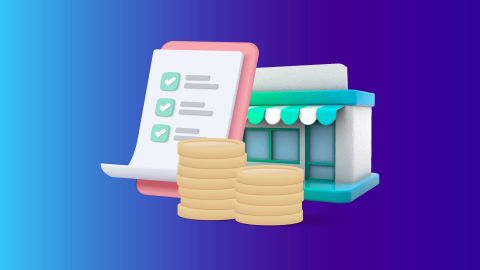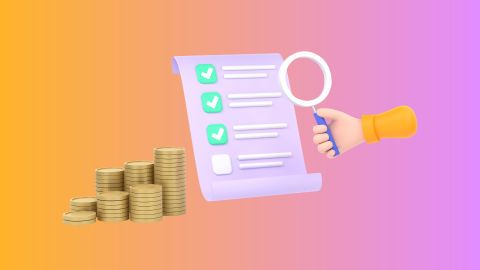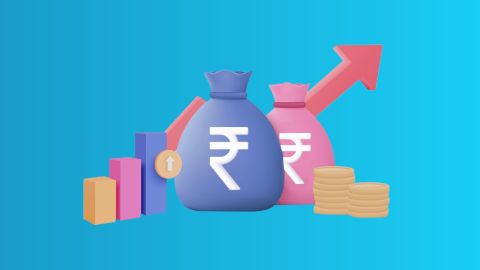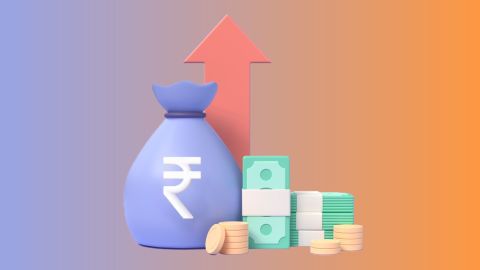The cost of debt is usually lower than the cost of equity because debt holders take less risk than equity investors. However, it still represents a significant financial obligation that impacts a company's profitability and liquidity. Companies aim to manage their cost of debt efficiently to maintain a healthy capital structure and optimise their financial performance. Understanding the cost of debt is crucial for businesses seeking to balance their liabilities and maximise their returns on investment.
What is the cost of debt?
The cost of debt refers to the effective interest rate a company pays on its borrowed funds. This cost is a critical component of a company’s overall expenses and is often considered when analysing financial health. It includes interest payments and other costs associated with borrowing, such as fees and penalties. Calculating the cost of debt helps businesses understand how much they need to pay to service their liabilities over time.
What are the components of the cost of debt?
- Interest payments: The primary component of the cost of debt is the interest that a company pays on its borrowed funds. The interest rate depends on various factors, including the creditworthiness of the borrower and market conditions.
- Fees and charges: Lenders may impose additional fees, such as arrangement fees, processing fees, or early repayment penalties, which contribute to the overall cost of debt.
- Tax deductions: Interest on debt is often tax-deductible, which can reduce the effective cost of debt. The net cost is calculated after considering the tax benefits.
- Loan tenure: The length of the loan affects the total interest paid over time. Longer tenures may result in higher interest costs, increasing the overall cost of debt.
- Credit rating: A company’s credit rating influences the interest rate it is offered. A lower credit rating typically leads to higher interest rates, raising the cost of debt.
Importance of cost of debt in financial analysis
- Evaluating financial health: The cost of debt is a critical metric in financial analysis as it provides insight into the company’s financial obligations and its ability to service debt.
- Capital structure optimisation: Understanding the cost of debt helps businesses make informed decisions about their capital structure, ensuring an optimal balance between debt and equity.
- Investment decisions: The cost of debt influences investment decisions, as it affects the potential return on investment. Higher costs may deter investment in certain projects.
- Benchmarking: Analysts use the cost of debt to benchmark a company's financial performance against industry peers. It helps in assessing the competitiveness of a business's financing strategy.
- Risk assessment: The cost of debt reflects the risk associated with a company's liabilities. Higher costs may indicate greater financial risk, which needs to be managed effectively.
How the cost of debt works?
- Interest rate determination: The interest rate a company pays on its debt is determined by several factors, including the prevailing market interest rates, the company’s credit rating, and the duration of the loan.
- Capital structure impact: The cost of debt directly impacts a company's capital structure. A lower cost of debt can encourage a higher proportion of debt in the capital structure, as it becomes a more cost-effective financing option compared to equity.
- Tax implications: Interest payments on debt are tax-deductible, which lowers the effective cost of debt. This tax advantage makes debt a more attractive option for financing.
- Debt servicing: Companies must regularly service their debt by making interest payments. Failure to do so can result in penalties or even bankruptcy.
- Cost calculation: The cost of debt is calculated as the effective interest rate paid on all debt, adjusted for taxes. This figure is crucial for evaluating the company's overall financial performance.
When to Apply the Cost of Debt Formula
Businesses typically use the cost of debt formula to monitor the cost of borrowing. This formula helps them determine how much they are paying to borrow money and understand what percentage of their capital cost comes from loans and bonds.
Some companies also use the formula to manage the cost of their existing debts. By knowing the total cost of debt, they can better forecast their cash flow and negotiate better terms with future lenders.
Investors use the formula to calculate the net present value (NPV) before investing in companies. NPV shows them the difference between a company’s cash inflow and outflow.
Formula and calculation of cost of debt
- Pre-tax cost of debt: The formula for calculating the pre-tax cost of debt is straightforward: Pre-tax cost of debt=Total interest expenses/ Total debt
- Post-tax cost of debt: To account for tax deductions, the post-tax cost of debt is calculated as follows: Post-tax cost of debt=Pre-tax cost of debt × (1 − Tax rate).
- Weighted average cost of debt: If a company has multiple debt instruments, the weighted average cost of debt (WACD) is used. It is calculated by weighting the cost of each debt by its proportion in the total debt structure.
- Effective interest rate method: This method considers the time value of money and provides a more accurate measure of the cost of debt by accounting for all cash flows related to debt servicing.
- Continuous review: Regularly recalculating the cost of debt is essential, as interest rates and tax rates may change, affecting the company’s cost structure.
Impact of taxes on cost of debt
- Tax deductibility of interest: One of the most significant impacts of taxes on the cost of debt is the tax-deductibility of interest payments, which lowers the effective cost of borrowing.
- Corporate tax rate: The higher the corporate tax rate, the greater the tax shield provided by interest deductions, thereby reducing the cost of debt.
- Tax optimisation strategies: Companies may engage in tax planning to maximise the benefits of interest deductibility, such as adjusting the mix of debt and equity in their capital structure.
- After-tax cost of debt: The after-tax cost of debt is a critical metric in financial analysis, as it reflects the actual cost incurred by the company after accounting for tax savings.
- Cross-border tax considerations: For multinational companies, the impact of taxes on the cost of debt can vary by jurisdiction, depending on local tax laws and treaties.
Example of cost of debt
- Hypothetical scenario: Consider a company with a total debt of ₹10 crores and annual interest expenses of ₹1 crore. The pre-tax cost of debt would be ₹1 crore / ₹10 crores = 10%.
- Tax rate impact: If the corporate tax rate is 30%, the post-tax cost of debt would be 10% × (1−0.30) = 7%.
- Comparison with equity: If the company’s cost of equity is 12%, the lower cost of debt (7%) makes it a more attractive financing option.
- WACD calculation: If the company has other debt instruments with different interest rates, the WACD would be calculated by weighting each debt’s cost according to its proportion in the total debt portfolio.
Factors influencing the cost of debt
- Credit rating: A company’s credit rating is one of the most significant factors affecting its cost of debt. A higher rating typically leads to lower interest rates.
- Market interest rates: Prevailing market interest rates directly influence the cost of debt. Rising interest rates increase the cost, while falling rates reduce it.
- Economic conditions: Economic stability or instability can impact the cost of debt, with uncertain conditions often leading to higher borrowing costs.
- Company’s financial health: A company with strong financials is likely to secure debt at a lower cost compared to a company with weaker financials.
- Loan tenure: The length of the loan affects the cost of debt, with longer-term loans typically having higher interest rates.
Why does debt have a cost?
- Risk premium: Lenders charge a risk premium on debt to compensate for the risk of default, which contributes to the cost of debt.
- Opportunity cost: The cost of debt reflects the opportunity cost for lenders, who could have invested their funds elsewhere.
- Inflation: Debt costs often incorporate an inflation premium, ensuring lenders receive a real return on their investment.
- Capital allocation: The cost of debt represents the cost of capital allocation, as companies allocate funds to different projects and investments.
- Administrative costs: Borrowing incurs administrative and legal costs, which are included in the overall cost of debt.
What makes the cost of debt increase?
- Credit rating downgrade: A downgrade in credit rating can lead to higher interest rates, increasing the cost of debt.
- Rising interest rates: An increase in market interest rates directly raises the cost of borrowing for companies.
- Economic downturn: During economic downturns, lenders may perceive higher risks, leading to an increase in the cost of debt.
- Increased leverage: Higher levels of debt increase financial risk, which can lead to higher interest costs.
- Reduced liquidity: If a company’s liquidity decreases, lenders may charge higher interest rates due to perceived risk, increasing the cost of debt.
How to reduce cost of debt?
- Improving credit rating: Companies can reduce their cost of debt by improving their credit rating through better financial management.
- Debt refinancing: Refinancing existing debt at lower interest rates can help reduce the overall cost of debt.
- Negotiating better terms: Companies can negotiate more favourable terms with lenders, such as lower interest rates or extended repayment periods.
- Diversifying funding sources: By diversifying their sources of debt, companies can secure more competitive interest rates and reduce their overall cost of debt.
- Maintaining financial stability: Companies with stable financials and cash flow are more likely to secure debt at lower costs.
Advantages of cost of debt
- Lower cost compared to equity: Debt is generally cheaper than equity financing, as interest payments are tax-deductible.
- Preservation of ownership: Using debt allows a company to raise capital without diluting ownership or control.
- Leverage benefits: Debt can be used to leverage returns on equity, potentially increasing shareholder value.
- Predictable payments: Debt repayments are predictable, allowing companies to plan their cash flow more effectively.
- Flexibility in financing: Debt offers various structures and terms, providing companies with flexibility in financing their operations or growth.
Limitations of cost of debt
- Repayment obligations: Debt must be repaid with interest, which can strain a company’s cash flow and financial stability.
- Increased risk: High levels of debt increase financial risk, potentially leading to financial distress or bankruptcy.
- Interest rate fluctuations: Variable interest rates can lead to increased borrowing costs, making debt more expensive over time.
- Credit rating impact: Excessive debt can lead to a credit rating downgrade, further increasing the cost of borrowing.
- Covenants and restrictions: Lenders may impose covenants or restrictions on a company’s operations, limiting its flexibility.
Difference between cost of debt and cost of equity
- Nature of capital: Debt is borrowed capital that must be repaid, while equity represents ownership in the company.
- Cost components: The cost of debt includes interest payments, while the cost of equity includes expected dividends and capital gains.
- Tax treatment: Debt interest is tax-deductible, lowering its cost. Equity returns are not tax-deductible.
- Investor expectations: Equity investors expect higher returns due to the risk of their investment, while debt holders receive fixed returns.
- Impact on financial risk: High levels of debt increase financial risk, while equity financing spreads risk among shareholders.
Conclusion
The cost of debt is a fundamental concept in financial management, influencing a company's capital structure, investment decisions, and overall financial health. It differs from the cost of equity in several key aspects, including risk, tax implications, and repayment obligations. For businesses, especially those considering a business loan, understanding the cost of debt is essential for making informed financial decisions and optimising their capital structure. By managing the cost of debt effectively, companies can enhance their financial stability and maximise returns for shareholders.
Know more about Bajaj Finserv Business Loans
Here are some of the key advantages of our business loan that make it an ideal choice for your business expenses:
- Simplified application process: Online applications streamline the process, reducing paperwork and saving time.
- High loan amount: Businesses can borrow funds up to Rs. 80 lakh, depending on their needs and qualification.
- Quick disbursal: Funds can be received in as little as 48 hours of approval, allowing businesses to respond promptly to opportunities and needs.
- Competitive interest rates: The interest rates for our business loans range from 14% to 26% per annum.




